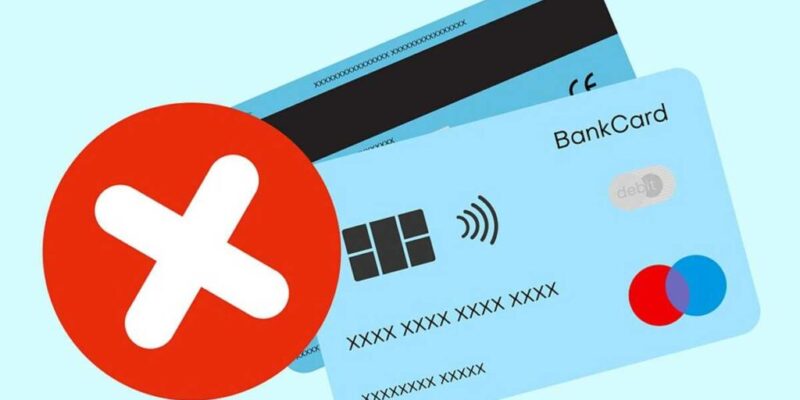Did you know businesses can lose up to 30% of their revenue to hidden electronic…

Card Issuer Rejection: What You Need to Know
Did you know that nearly 15% of all credit card transactions are declined by card issuers? This leads to potential losses in sales and customer satisfaction. Knowing about card issuer rejection and the reasons for credit card denial is key for merchants. It helps them improve their checkout experience and boost approval rates.
A card issuer rejection means the issuing bank stops a transaction. It often comes with a code explaining why. Misunderstanding these codes can cause unnecessary losses and lose customers. Since false rejections often cost more than actual fraud, it’s vital to understand and manage them well. This keeps customers happy and reduces sales losses.
Key Takeaways
- Nearly 15% of all credit card transactions face card issuer rejection.
- Understanding rejection codes can help minimize unnecessary sales losses.
- False rejections often cost more than actual fraud incidents.
- Effective management of card rejections can enhance customer satisfaction.
- Comprehending the reasons for credit card denial can improve your approach to maintaining positive customer relations.
Understanding Card Issuer Rejection
Card issuer rejection can be frustrating, especially when you’re unsure why it happened. Knowing how these rejections work, the types, and reasons can lessen their impact on your transactions. This knowledge can also help lower the chances of a credit card application being denied.
What is Card Issuer Rejection?
A card issuer rejection occurs when a payment is declined by the bank that issued the card. This can cause problems for both merchants and customers, often ending in a denied credit card application. Understanding these rejections helps you prepare for future transactions.
Types of Issuer Declines
There are two main types of issuer declines: soft declines and hard declines. Soft declines are usually temporary and can be fixed, like network errors or not enough funds. Hard declines are more serious, indicating issues like a closed account or fraud suspicions, making it impossible for the issuer to approve the transaction.
Common Decline Codes
Rejections often come with specific codes that merchants use to understand the problem. These codes can point out issues like not enough money, suspicious activity, or wrong information. Knowing these codes helps in figuring out why a credit card application was denied.
Issuer Protection Strategies
To avoid card issuer rejections, it’s key to have strategies in place. This includes checking card details, using strong security, and knowing how your credit score affects approval chances. Avoiding repeated attempts without solving the issue can also help prevent more declines.
Common Reasons for Card Issuer Rejection
Many factors can cause a credit card application to be denied or a transaction to be declined. Knowing these reasons helps you handle your card responsibilities well. This way, you avoid the trouble of a rejected application.
Incorrect Card Details
Entering wrong card details is a common reason for a declined transaction. Mistyping the card number, expiration date, or CVV code can lead to failure. Make sure to double-check all information to avoid this.
Insufficient Funds
Transactions may be declined if you don’t have enough money or if you’ve reached your credit limit. When you try to make a purchase, the issuer checks if you have enough balance. Keep an eye on your account to prevent this.
Suspicious Activities and Fraud
Issuers may block transactions that seem suspicious or could be fraudulent. This is to protect you and the bank. If you make unusual purchases or buy something big in a new place, your card might be declined. Knowing about these security steps is important.
Expired or Lost/Stolen Cards
Using an expired, lost, or stolen card can also lead to a declined transaction. Issuers block such cards to stop unauthorized use. It’s crucial to keep your card details up to date to avoid this.
Understanding why your credit card application might be denied helps you manage your finances better. It ensures you follow responsible financial habits.
Mitigating the Impact of Card Issuer Rejection
Card issuer rejection can hurt a business’s profits and make customers unhappy. But, merchants can act early to lessen the blow and make checkouts smoother. These steps are key for keeping a strong bond with customers and boosting credit card approval rates.
Steps Merchants Can Take
First, merchants need to figure out why the card was rejected and what the rejection code means. This lets them help customers fix any wrong card info or contact their card companies. Also, using tech like tokenization can stop chargebacks and fraud, keeping the business and customers safe.
Customer Communication Strategies
Talking clearly with customers when a card rejection happens is crucial. Merchants should tell customers right away and show them how to fix the problem. This keeps customers loyal and strengthens the bond with them. Being open helps avoid chargebacks and stops a rejection from causing lost sales.
Alternative Payment Options
Adding alternative payment options like digital wallets, PayPal, or even cryptocurrency gives customers more ways to pay. This variety meets different customer needs and ensures a failed transaction doesn’t mean lost sales. Offering many payment choices makes checkouts more flexible and friendly for customers.
Conclusion
Knowing about card issuer rejections is key for both people and businesses using credit cards. It helps you understand why transactions might not go through and how to handle it. This knowledge lets you manage rejections better and keep things running smoothly.
Merchants need to act fast and clearly when dealing with rejections. Telling customers why their card was declined and reassuring them can ease their worries. Also, offering many payment options helps with different situations and boosts success rates.
Using these strategies helps solve immediate problems and keeps customers happy. It’s important to avoid losing sales due to rejections. This approach makes sure customers have a good experience with you. It builds a trustworthy place where customers stay happy and your business grows.



Comments (0)